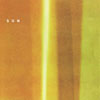 Pop music has become associated recently with certain bands that loveto either impersonate early rock n' roll to no avail or slickeverything up in fancy production to make up for the horriblesongwriting. This delicate debut does neither and ends up inducing aneased state of mind. It also happens to include a second full albumwith each track mixed by the likes of Rafael Toral, Hrvatski, andChristoph Heemann. Every instrument and every little nuance takes itstime to develop and never raises its voice beyond a low murmur. Thelyrics are lighthearted, sometimes nonsensical, and always have atendency to pass in and out of the spotlight. There's a sense ofheartbreak here and there, especially on "Moon" and "I Don't Mind."Slightly treated guitars and pianos phase in and out of eachother andon the latter a small, gentle voice declares "I don't mind if I'm notby your side" as if it were a catharsis and a resignation. Sun has afantastic sense of space and their more laid back songs areparticularly excellent: there's always room to breathe and stretch outwithin the songs themselves and so every small detail stands out andsparkles as if it were the proud star of the show. The closing "It'sNot Real" is a blues-inspired mark that puts a pit right in the centerof my stomach. The impression is one of loneliness and a dying sense ofhope. I've often sat down outside at night with this playing and justzoned out completely; everything just slows down right along with themusic. The remix album is entirely different from the original. Themusic is still mostly low-key and some of the original elements areretained but there are noiser and more cavernous waves of sound used.Perhaps I'll go take a drive and remember all the places I used to hangout while listening to this, there's a sense of childhood throughoutthat makes me want to reminisce about a few things.
Pop music has become associated recently with certain bands that loveto either impersonate early rock n' roll to no avail or slickeverything up in fancy production to make up for the horriblesongwriting. This delicate debut does neither and ends up inducing aneased state of mind. It also happens to include a second full albumwith each track mixed by the likes of Rafael Toral, Hrvatski, andChristoph Heemann. Every instrument and every little nuance takes itstime to develop and never raises its voice beyond a low murmur. Thelyrics are lighthearted, sometimes nonsensical, and always have atendency to pass in and out of the spotlight. There's a sense ofheartbreak here and there, especially on "Moon" and "I Don't Mind."Slightly treated guitars and pianos phase in and out of eachother andon the latter a small, gentle voice declares "I don't mind if I'm notby your side" as if it were a catharsis and a resignation. Sun has afantastic sense of space and their more laid back songs areparticularly excellent: there's always room to breathe and stretch outwithin the songs themselves and so every small detail stands out andsparkles as if it were the proud star of the show. The closing "It'sNot Real" is a blues-inspired mark that puts a pit right in the centerof my stomach. The impression is one of loneliness and a dying sense ofhope. I've often sat down outside at night with this playing and justzoned out completely; everything just slows down right along with themusic. The remix album is entirely different from the original. Themusic is still mostly low-key and some of the original elements areretained but there are noiser and more cavernous waves of sound used.Perhaps I'll go take a drive and remember all the places I used to hangout while listening to this, there's a sense of childhood throughoutthat makes me want to reminisce about a few things.  Pop music has become associated recently with certain bands that loveto either impersonate early rock n' roll to no avail or slickeverything up in fancy production to make up for the horriblesongwriting. This delicate debut does neither and ends up inducing aneased state of mind. It also happens to include a second full albumwith each track mixed by the likes of Rafael Toral, Hrvatski, andChristoph Heemann. Every instrument and every little nuance takes itstime to develop and never raises its voice beyond a low murmur. Thelyrics are lighthearted, sometimes nonsensical, and always have atendency to pass in and out of the spotlight. There's a sense ofheartbreak here and there, especially on "Moon" and "I Don't Mind."Slightly treated guitars and pianos phase in and out of eachother andon the latter a small, gentle voice declares "I don't mind if I'm notby your side" as if it were a catharsis and a resignation. Sun has afantastic sense of space and their more laid back songs areparticularly excellent: there's always room to breathe and stretch outwithin the songs themselves and so every small detail stands out andsparkles as if it were the proud star of the show. The closing "It'sNot Real" is a blues-inspired mark that puts a pit right in the centerof my stomach. The impression is one of loneliness and a dying sense ofhope. I've often sat down outside at night with this playing and justzoned out completely; everything just slows down right along with themusic. The remix album is entirely different from the original. Themusic is still mostly low-key and some of the original elements areretained but there are noiser and more cavernous waves of sound used.Perhaps I'll go take a drive and remember all the places I used to hangout while listening to this, there's a sense of childhood throughoutthat makes me want to reminisce about a few things.
Pop music has become associated recently with certain bands that loveto either impersonate early rock n' roll to no avail or slickeverything up in fancy production to make up for the horriblesongwriting. This delicate debut does neither and ends up inducing aneased state of mind. It also happens to include a second full albumwith each track mixed by the likes of Rafael Toral, Hrvatski, andChristoph Heemann. Every instrument and every little nuance takes itstime to develop and never raises its voice beyond a low murmur. Thelyrics are lighthearted, sometimes nonsensical, and always have atendency to pass in and out of the spotlight. There's a sense ofheartbreak here and there, especially on "Moon" and "I Don't Mind."Slightly treated guitars and pianos phase in and out of eachother andon the latter a small, gentle voice declares "I don't mind if I'm notby your side" as if it were a catharsis and a resignation. Sun has afantastic sense of space and their more laid back songs areparticularly excellent: there's always room to breathe and stretch outwithin the songs themselves and so every small detail stands out andsparkles as if it were the proud star of the show. The closing "It'sNot Real" is a blues-inspired mark that puts a pit right in the centerof my stomach. The impression is one of loneliness and a dying sense ofhope. I've often sat down outside at night with this playing and justzoned out completely; everything just slows down right along with themusic. The remix album is entirely different from the original. Themusic is still mostly low-key and some of the original elements areretained but there are noiser and more cavernous waves of sound used.Perhaps I'll go take a drive and remember all the places I used to hangout while listening to this, there's a sense of childhood throughoutthat makes me want to reminisce about a few things.  Tell the hippies come back and be crushed to dust! This is easily BardoPond's best album and maybe the most dazzling recording I've heard in adecade or so! Straight out of the flimsy artwork bereft plasticenvelope on its first wonderful spin even their previous run ofoutstanding vented trip-fuck drone-rockers hadn't quite prepared me forsuch fine honed intensity and sheer beauty. Bardo Pond have alwaysliked their psychedelic stew very heavy and deeply hypnotic. These sixsongs take a trip through beautiful cosmic mindfuck sex energy and outspinning around stars, dissolving into pure light. If you want headexpanding drone rock with mammoth slow guitar overkill, this is theplace to find it. I didn't think they'd ever be able to surpass theirprevious highpoint Set and Setting,but they have and then some. The recording is sharper but that doesn'tdetract from the heady riff brew, just fires it to harder glory. Whereonce they were sludgey they now burn clear and bright with no sops tovapid commerciality. Two guitars overdriven with effects trace patternson the sun. Isobel Sollenberger sings beguilingly of every man being astar which sounds trite on the screen but fits the music perfectly.There is a deceptive lull when one of the guys, probably bassist ClintTakeda, takes a mumbling stroll through "Walking Clouds" in a superiortake on the kind of psych-folk Flying Saucer Attack used to excel at.When the final swirling megablast of "Night of Frogs" atomizes solarrevolution time, it's obvious that Bardo Pond have penetrated so farbeyond the mundane now that there isn't any turning back. Just at thepoint of collapse, about to t(r)ip over into infinity, On the Ellipseis such a fitting title—this would be a great soundtrack to leaving theplanet, dropping out forever.Mogwai have proclaimed them theirfavourite band, but Bardo Pond are universes beyond. The word is thatthey're going to be touring Europe with Jackie-OMotherfucker and Threnody Ensemble in the Autumn. Maybe it'll be timeto hit the road and never come back.
Tell the hippies come back and be crushed to dust! This is easily BardoPond's best album and maybe the most dazzling recording I've heard in adecade or so! Straight out of the flimsy artwork bereft plasticenvelope on its first wonderful spin even their previous run ofoutstanding vented trip-fuck drone-rockers hadn't quite prepared me forsuch fine honed intensity and sheer beauty. Bardo Pond have alwaysliked their psychedelic stew very heavy and deeply hypnotic. These sixsongs take a trip through beautiful cosmic mindfuck sex energy and outspinning around stars, dissolving into pure light. If you want headexpanding drone rock with mammoth slow guitar overkill, this is theplace to find it. I didn't think they'd ever be able to surpass theirprevious highpoint Set and Setting,but they have and then some. The recording is sharper but that doesn'tdetract from the heady riff brew, just fires it to harder glory. Whereonce they were sludgey they now burn clear and bright with no sops tovapid commerciality. Two guitars overdriven with effects trace patternson the sun. Isobel Sollenberger sings beguilingly of every man being astar which sounds trite on the screen but fits the music perfectly.There is a deceptive lull when one of the guys, probably bassist ClintTakeda, takes a mumbling stroll through "Walking Clouds" in a superiortake on the kind of psych-folk Flying Saucer Attack used to excel at.When the final swirling megablast of "Night of Frogs" atomizes solarrevolution time, it's obvious that Bardo Pond have penetrated so farbeyond the mundane now that there isn't any turning back. Just at thepoint of collapse, about to t(r)ip over into infinity, On the Ellipseis such a fitting title—this would be a great soundtrack to leaving theplanet, dropping out forever.Mogwai have proclaimed them theirfavourite band, but Bardo Pond are universes beyond. The word is thatthey're going to be touring Europe with Jackie-OMotherfucker and Threnody Ensemble in the Autumn. Maybe it'll be timeto hit the road and never come back.  Ex Models torment their instruments, creating sounds that can be lookedupon as pushing the equipment to its limits or just plain making ithurt so that it screams in pain and joy. They are the latest masters ofthe no wave sound, emerging from the New York underground only severalyears ago and already boasting a mature sound and a loyal following. Zoo Psychologyis their second full-length, and it shows growth over their debut asthe band grows comfortable in some ways but branches out in others.These musicians want to dismantle the song structure, abating therelentless verse-chorus arrangements to allow for more adventurous andimprovisational terrain. At the same time, there is an overalldismemberment of melody and time signatures. All throughout, thebrothers Motia intertwine the screams of the guitars with the shrieksof Shahin, who seems to enjoy pushing his vocal cords until they don'teven have the will to relent. It's not easy listening, and it's not aneasy listen, either. It's organized disorder, with a fine sense ofhumor and a generous helping of tongue-in-cheek, particularly on thesong titles ("Fuck to the Music," "Brand New Panties," and "HeyBoner"). In fact, its the sexual charge that gets these songs across,despite the almost disjointed nature of the music. It's not foreveryone, but the near funk of "Hott 4 Discourse" and the jackhammer"What is a Price" can appeal to most anyone who likes post punk eardamaging noise. A band that's this unafraid to push their limits can'tdo anything but improve, and it'll be a strange and pleasureable rideevery time.
Ex Models torment their instruments, creating sounds that can be lookedupon as pushing the equipment to its limits or just plain making ithurt so that it screams in pain and joy. They are the latest masters ofthe no wave sound, emerging from the New York underground only severalyears ago and already boasting a mature sound and a loyal following. Zoo Psychologyis their second full-length, and it shows growth over their debut asthe band grows comfortable in some ways but branches out in others.These musicians want to dismantle the song structure, abating therelentless verse-chorus arrangements to allow for more adventurous andimprovisational terrain. At the same time, there is an overalldismemberment of melody and time signatures. All throughout, thebrothers Motia intertwine the screams of the guitars with the shrieksof Shahin, who seems to enjoy pushing his vocal cords until they don'teven have the will to relent. It's not easy listening, and it's not aneasy listen, either. It's organized disorder, with a fine sense ofhumor and a generous helping of tongue-in-cheek, particularly on thesong titles ("Fuck to the Music," "Brand New Panties," and "HeyBoner"). In fact, its the sexual charge that gets these songs across,despite the almost disjointed nature of the music. It's not foreveryone, but the near funk of "Hott 4 Discourse" and the jackhammer"What is a Price" can appeal to most anyone who likes post punk eardamaging noise. A band that's this unafraid to push their limits can'tdo anything but improve, and it'll be a strange and pleasureable rideevery time.samples:
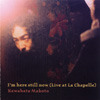 When talking about the music of Kawabata Makoto or his band AcidMothers Temple, it's difficult to avoid the issue of quality control.Because there will always be someone anxious to publish every sonicutterence that Makoto commits to tape, and because Makoto appears toindulge anyone who asks him for an album, the ratio of albums to fullythought-out ideas is weighted heavily towards the former. "I'm HereStill Now" is another unnecessary addition to his inexplicably growingcatalog. It is a mediocre, nearly bootleg-quality quality audiencerecording of an improvised solo guitar and sarangi concert he gave inToulouse in 2002. As an improviser, Makoto can be great in a rockcontext; when he plays in Acid Mothers Temple or with improv/rock bandsMusica Transonic or Mainliner, he can wail like hell. But on thisrecording he seems confused, even bored. He begins with the tentativedrone of feedback through a delay effect. If you've ever been around aguitarist who plays with a rack delay for the first time, you've heardthese sounds before. After ten minutes of noodling without arrivinganywhere, he switches to a bowed sarangi through tons of reverb. I getthe feeling that reverb here is used as a cheap way to imply gravity,to cover up the uncompelling music with an emotionally-chargedtechnological shorthand. He attempts a few directions here, but doesnot commit to any of them. Unsurprisingly, he finishes by turning hisdigital delay effects back on and doing the first trick again, only fora longer amount of time. It succeeds in becoming a drone only bydefinition, though I get the feeling that Makoto was trying for sometranscendental bliss such that Phil Niblock and Keiji Haino achieve.What could it mean that, when listening to "I'm Here Still Now", I hearthe musician's effects more than I hear the music he's making? And whydid some editor not remove the audible digital clip at the 20-minutemark, the sound of audience members coughing and shifting in thierseats, or of glasses clinking? Perhaps there is such a rush to releasemore Makoto product that the merit of each individual album is notfully considered. -
When talking about the music of Kawabata Makoto or his band AcidMothers Temple, it's difficult to avoid the issue of quality control.Because there will always be someone anxious to publish every sonicutterence that Makoto commits to tape, and because Makoto appears toindulge anyone who asks him for an album, the ratio of albums to fullythought-out ideas is weighted heavily towards the former. "I'm HereStill Now" is another unnecessary addition to his inexplicably growingcatalog. It is a mediocre, nearly bootleg-quality quality audiencerecording of an improvised solo guitar and sarangi concert he gave inToulouse in 2002. As an improviser, Makoto can be great in a rockcontext; when he plays in Acid Mothers Temple or with improv/rock bandsMusica Transonic or Mainliner, he can wail like hell. But on thisrecording he seems confused, even bored. He begins with the tentativedrone of feedback through a delay effect. If you've ever been around aguitarist who plays with a rack delay for the first time, you've heardthese sounds before. After ten minutes of noodling without arrivinganywhere, he switches to a bowed sarangi through tons of reverb. I getthe feeling that reverb here is used as a cheap way to imply gravity,to cover up the uncompelling music with an emotionally-chargedtechnological shorthand. He attempts a few directions here, but doesnot commit to any of them. Unsurprisingly, he finishes by turning hisdigital delay effects back on and doing the first trick again, only fora longer amount of time. It succeeds in becoming a drone only bydefinition, though I get the feeling that Makoto was trying for sometranscendental bliss such that Phil Niblock and Keiji Haino achieve.What could it mean that, when listening to "I'm Here Still Now", I hearthe musician's effects more than I hear the music he's making? And whydid some editor not remove the audible digital clip at the 20-minutemark, the sound of audience members coughing and shifting in thierseats, or of glasses clinking? Perhaps there is such a rush to releasemore Makoto product that the merit of each individual album is notfully considered. - 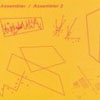 Released just a few months after the rigid 10th, Nobukazu Takemura's newest is an adventure in minimalism that is as restorative as a long vacation taken after going too long without a break. Too often have I heard sound collages that seem to go nowhere; they simply run about in circles covering the same old ground for the duration of fifteen or twenty minutes or more. Thankfully, Assembler/Assembler 2 is about as predictable as a piano falling out of a building.
Released just a few months after the rigid 10th, Nobukazu Takemura's newest is an adventure in minimalism that is as restorative as a long vacation taken after going too long without a break. Too often have I heard sound collages that seem to go nowhere; they simply run about in circles covering the same old ground for the duration of fifteen or twenty minutes or more. Thankfully, Assembler/Assembler 2 is about as predictable as a piano falling out of a building.
 Success in the music business, as honorable as it is fleeting, grants acertain immunity which allows artists a level of creative freedom. Suchliberties would be considered risky if indulged in by an unknown, butthe same measures taken by an established act with a good sales trackand a verbose publicist will often be viewed favorably. Groups likeRadiohead and Autechre fit that profile. However, the man behindUniform does not. His 2001 album for Mute Irony Isunder the 2nd Gen moniker achieved, at least, a dignified level ofmedia praise, being well-reviewed by both respectable and disgustingpublications alike. Its noisy, filthy style of hip hop found champions(and collaborators) in peers like Dälek and Techno Animal.Unfortunately, I doubt that either of those acts would have much lovefor his debut release as Uniform. Released on the growingpost-industrial record label Ad Noiseam, Not A Word lacks thesubstance of the 2nd Gen project. Nearly devoid of actual content, thealbum sounds much more like a collection of segues and interludes thana full-length album. This sixteen track disc could have beencomfortably reduced to a less pretentious, more concise EP, if eventhat. I'd offer more information and opinion about this release, but,in fairness, it doesn't deserve it. With any luck, Flicknives, the upcoming 2nd Gen follow-up album to be released on Quatermass, will prove to be a far more worthwhile listen.
Success in the music business, as honorable as it is fleeting, grants acertain immunity which allows artists a level of creative freedom. Suchliberties would be considered risky if indulged in by an unknown, butthe same measures taken by an established act with a good sales trackand a verbose publicist will often be viewed favorably. Groups likeRadiohead and Autechre fit that profile. However, the man behindUniform does not. His 2001 album for Mute Irony Isunder the 2nd Gen moniker achieved, at least, a dignified level ofmedia praise, being well-reviewed by both respectable and disgustingpublications alike. Its noisy, filthy style of hip hop found champions(and collaborators) in peers like Dälek and Techno Animal.Unfortunately, I doubt that either of those acts would have much lovefor his debut release as Uniform. Released on the growingpost-industrial record label Ad Noiseam, Not A Word lacks thesubstance of the 2nd Gen project. Nearly devoid of actual content, thealbum sounds much more like a collection of segues and interludes thana full-length album. This sixteen track disc could have beencomfortably reduced to a less pretentious, more concise EP, if eventhat. I'd offer more information and opinion about this release, but,in fairness, it doesn't deserve it. With any luck, Flicknives, the upcoming 2nd Gen follow-up album to be released on Quatermass, will prove to be a far more worthwhile listen. 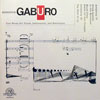 This collection is a curious combination of old and new. Gaburo, born1926 was trained as a composer in the old school and is clearlyinfluenced by pre-WW2 aesthetics and techniques but the music herecombines this with free-wheeling new-world invention in the age ofCage. The oldest of these five pieces from 1956 is a string quartetthat, while clearly comptetent, has more tutonic romanticism (in adecidedly Schoenberg style) than I prefer. Antiphony III and IV,dating from 62 and 67 respectively, both combine live musicians withelectronic music on tape, both set miniature poems by Virginia Hommel,and both aim to create a continuum between the sounds of the singersand instruments and the electronic sounds. The continuum was achievedby composing the pieces as a whole and orchestrating them withmusicians, recordings of the musicians, processed sounds from thoserecordings and synthetic sounds similar to all these. The result isconvincing and at times approaches the lyricism of Nono and Berio'selectro-acoustic music. But underlying it all is still clearlySchoenberg—Antiphony IV for tape and 16 voices being destinctlyreminicent of the choral work of the father of serialism. But there isalso a hint of Ligeti's Aventures and Nouvelles Aventures inthe more outlandish vocal techniques used. In these two pieces I findthat the combination of the old, in the formal and ensemble aspects,with the new, in the electronic and sound manipulation, actually worksvery well. They seem anchored in a familliar tradition while providingcompelling innovative personal expression. Mouth-Piece: Sextet for Solo Trumpet(1970) on the other hand is hideous. It is an excercise in extendedtechnique that would have been better left either to an improviser orto a composer who genuinely loves the trumpet. And that leaves The Flow of (u)a radically minimalistic piece for three voices all singing the samenote continuously using the "u" phoneme (i.e. "oo") for 23 minutes. Itis quintessential drone music that bears comparison to that of PhilNiblock. But while most drone music normally uses occasional changes tothe component tones this piece uses just the minutest continualvariation of pitch and tone color. The fact that this is sung by humanvoices is crucial to the success of the piece since the changing beatsand colors arise form the singers continually working to match pitchwith each other and to perfect their "u" sound. Extreme in itssimplicity it works in they way all good drone music works: bycaptivating attention and drawing one into facination with the minutedetail of the sound.
This collection is a curious combination of old and new. Gaburo, born1926 was trained as a composer in the old school and is clearlyinfluenced by pre-WW2 aesthetics and techniques but the music herecombines this with free-wheeling new-world invention in the age ofCage. The oldest of these five pieces from 1956 is a string quartetthat, while clearly comptetent, has more tutonic romanticism (in adecidedly Schoenberg style) than I prefer. Antiphony III and IV,dating from 62 and 67 respectively, both combine live musicians withelectronic music on tape, both set miniature poems by Virginia Hommel,and both aim to create a continuum between the sounds of the singersand instruments and the electronic sounds. The continuum was achievedby composing the pieces as a whole and orchestrating them withmusicians, recordings of the musicians, processed sounds from thoserecordings and synthetic sounds similar to all these. The result isconvincing and at times approaches the lyricism of Nono and Berio'selectro-acoustic music. But underlying it all is still clearlySchoenberg—Antiphony IV for tape and 16 voices being destinctlyreminicent of the choral work of the father of serialism. But there isalso a hint of Ligeti's Aventures and Nouvelles Aventures inthe more outlandish vocal techniques used. In these two pieces I findthat the combination of the old, in the formal and ensemble aspects,with the new, in the electronic and sound manipulation, actually worksvery well. They seem anchored in a familliar tradition while providingcompelling innovative personal expression. Mouth-Piece: Sextet for Solo Trumpet(1970) on the other hand is hideous. It is an excercise in extendedtechnique that would have been better left either to an improviser orto a composer who genuinely loves the trumpet. And that leaves The Flow of (u)a radically minimalistic piece for three voices all singing the samenote continuously using the "u" phoneme (i.e. "oo") for 23 minutes. Itis quintessential drone music that bears comparison to that of PhilNiblock. But while most drone music normally uses occasional changes tothe component tones this piece uses just the minutest continualvariation of pitch and tone color. The fact that this is sung by humanvoices is crucial to the success of the piece since the changing beatsand colors arise form the singers continually working to match pitchwith each other and to perfect their "u" sound. Extreme in itssimplicity it works in they way all good drone music works: bycaptivating attention and drawing one into facination with the minutedetail of the sound. 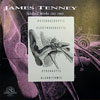 Tenney was the first composer to give a real workout to the computer composition techniques that would dominate the computer music scene from the 60s through to the 90s and that are still widely used today. He did this during two and a half years at Bell Telephone Labs beginning 1961 working closely with Max Mathews, the inventor of the MUSIC series of programming environments.
Tenney was the first composer to give a real workout to the computer composition techniques that would dominate the computer music scene from the 60s through to the 90s and that are still widely used today. He did this during two and a half years at Bell Telephone Labs beginning 1961 working closely with Max Mathews, the inventor of the MUSIC series of programming environments.
 I wonder what kind of shoes that members of A Northern Chorus wear. Ifeel confident in assuming that they are familiar with every nook andcranny of their footwear, from the wrinkles that ring their toes to thestrains in the laces. I say this because I take Spirit Flagsto be the product of some very attentive, and very detailed shoegazers;a deeply immersing listen that sweeps across you like a warm blanket.The album begins with the twinkling, lullaby melody of "Song and I,"and as the music slowly fades closer to the fore, the dreamy vocalharmonies reveal themselves hovering through the instruments, blendingthemselves perfectly, neither standing out nor going unnoticed butgiving the song an amazing buoyancy. The songs on Spirit Flagsare excursions in texture and depth, the shortest track falling justshort of the four-minute mark. Rarely does it seem that any track hasoverstayed its welcome, as the melodies and harmonies frequently expandand evolve into other forms amidst the guitar wash and plaintivecontributions of flute and violin. On "Let the Parrots Speak forThemselves" and "Take Your Canvas Elsewhere," the reedy lead vocals attimes evoke Dean Wareham, while often taking on a full-bodied tenor oftheir own. "Mombassa" is a somewhat darker track, mixing a spookyreverb with sampled sound bites of fire and brimstone preachersbellowing (seemingly at each other, but it's just the way the samplesare overlaid) about God knows what, something about not believing inthe resurrection. It makes for a rather effective mood piece, with thefervor and intensity of the speakers contrasting with the tentative,ethereal musical background like a splash of cold water in a warm bed."I Dreamt the World had Ended" continues where "Mombassa" began, withdark lyrics about the sky exploding and choking fire being enveloped ina less than menacing arrangement. It doesn't seem at all dissonant orout of place, however. It is, after all, just a dream. For the mostpart, A Northern Chorus inhabits a limited range of tempo, and whilesome dynamics in that respect might have added more power to some oftheir songs, clearly they were aiming for a more subdued attack. Thatsubtlety can be just as powerful as displayed in a brief break on'Eilan Donan," with the music suddenly disappearing as ghostlike vocalsintone, "We'll be right on your heels." In that short moment, it isimmensely affecting. Spirit Flags slowly seeps along, at timesbeautiful and comforting. Whatever kind of shoes A Northern Choruswears, they must be very interesting.
I wonder what kind of shoes that members of A Northern Chorus wear. Ifeel confident in assuming that they are familiar with every nook andcranny of their footwear, from the wrinkles that ring their toes to thestrains in the laces. I say this because I take Spirit Flagsto be the product of some very attentive, and very detailed shoegazers;a deeply immersing listen that sweeps across you like a warm blanket.The album begins with the twinkling, lullaby melody of "Song and I,"and as the music slowly fades closer to the fore, the dreamy vocalharmonies reveal themselves hovering through the instruments, blendingthemselves perfectly, neither standing out nor going unnoticed butgiving the song an amazing buoyancy. The songs on Spirit Flagsare excursions in texture and depth, the shortest track falling justshort of the four-minute mark. Rarely does it seem that any track hasoverstayed its welcome, as the melodies and harmonies frequently expandand evolve into other forms amidst the guitar wash and plaintivecontributions of flute and violin. On "Let the Parrots Speak forThemselves" and "Take Your Canvas Elsewhere," the reedy lead vocals attimes evoke Dean Wareham, while often taking on a full-bodied tenor oftheir own. "Mombassa" is a somewhat darker track, mixing a spookyreverb with sampled sound bites of fire and brimstone preachersbellowing (seemingly at each other, but it's just the way the samplesare overlaid) about God knows what, something about not believing inthe resurrection. It makes for a rather effective mood piece, with thefervor and intensity of the speakers contrasting with the tentative,ethereal musical background like a splash of cold water in a warm bed."I Dreamt the World had Ended" continues where "Mombassa" began, withdark lyrics about the sky exploding and choking fire being enveloped ina less than menacing arrangement. It doesn't seem at all dissonant orout of place, however. It is, after all, just a dream. For the mostpart, A Northern Chorus inhabits a limited range of tempo, and whilesome dynamics in that respect might have added more power to some oftheir songs, clearly they were aiming for a more subdued attack. Thatsubtlety can be just as powerful as displayed in a brief break on'Eilan Donan," with the music suddenly disappearing as ghostlike vocalsintone, "We'll be right on your heels." In that short moment, it isimmensely affecting. Spirit Flags slowly seeps along, at timesbeautiful and comforting. Whatever kind of shoes A Northern Choruswears, they must be very interesting.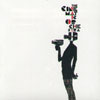 The concept of live music accompanying moving pictures is as old ascinema itself; pianists and organists often providing the soundtrack tothe images that danced on the screens in darkened movie houses. Inrecent years, some musicians have renewed the interest in silent filmsof the day by performing their modern compositions along as an updatedsoundtrack. For J. Swinscoe and his Cinematic Orchestra, such a task issecond nature, given the nature of the group's original concept thattheir name validates. Man With A Movie Camerais their current soundtrack to Russian film maker Dziga Vertov's 1929classic of the same name. As a variant of the title also appeared as atrack on last year's Every Day, the Cinematics would be themost likely candidates for such a project. The band recorded the disc'sseventeen tracks live in the studio with the augmentation of a stringtrio and percussionist for a more cohesive performance. Man With A Movie Camera is comprised of renamed workings of selections from Every Dayin which the live strings replace sampled ones, some new compositions,interludes and a few covers. "The Awakening of a Woman" is easilyidentifiable as last year's "Burn Out" from its slit-drum percussionintro and melodic strings progressions. The live performance andinstrumentation give this track a more organic feel in comparison tothe original recording. The newer "Odessa" and "The Magician" aredelicate piano pieces performed by Jon Ellis with a classical touchthat would probably sound all the more beautiful with the accompanyingvisuals for which they were intended. "Work It!" is best know by theaforementioned title track. Its mechanical feel of plucked strings andhaunting soprano saxophone intro are very powerful in the liveperformance setting. The busy latin-jazz groove of "Reel Life" isperformed almost note perfect from the remix "Evolution II" by thegroup's turntablist, Patrick Carpenter. Swinscoe and company again paytriubute to Lester Bowie and the Art Ensemble of Chicago with theirrenditions of the group's "Theme De Yoyo," "Theme Reprise" and "YoyoWaltz" which manage to capture a playful energy in a funky environment.A DVD of the group in performance accompanying the original Man With A Movie Camera film is due out this week, at which point this already great soundtrack should become part of a more powerful medium.
The concept of live music accompanying moving pictures is as old ascinema itself; pianists and organists often providing the soundtrack tothe images that danced on the screens in darkened movie houses. Inrecent years, some musicians have renewed the interest in silent filmsof the day by performing their modern compositions along as an updatedsoundtrack. For J. Swinscoe and his Cinematic Orchestra, such a task issecond nature, given the nature of the group's original concept thattheir name validates. Man With A Movie Camerais their current soundtrack to Russian film maker Dziga Vertov's 1929classic of the same name. As a variant of the title also appeared as atrack on last year's Every Day, the Cinematics would be themost likely candidates for such a project. The band recorded the disc'sseventeen tracks live in the studio with the augmentation of a stringtrio and percussionist for a more cohesive performance. Man With A Movie Camera is comprised of renamed workings of selections from Every Dayin which the live strings replace sampled ones, some new compositions,interludes and a few covers. "The Awakening of a Woman" is easilyidentifiable as last year's "Burn Out" from its slit-drum percussionintro and melodic strings progressions. The live performance andinstrumentation give this track a more organic feel in comparison tothe original recording. The newer "Odessa" and "The Magician" aredelicate piano pieces performed by Jon Ellis with a classical touchthat would probably sound all the more beautiful with the accompanyingvisuals for which they were intended. "Work It!" is best know by theaforementioned title track. Its mechanical feel of plucked strings andhaunting soprano saxophone intro are very powerful in the liveperformance setting. The busy latin-jazz groove of "Reel Life" isperformed almost note perfect from the remix "Evolution II" by thegroup's turntablist, Patrick Carpenter. Swinscoe and company again paytriubute to Lester Bowie and the Art Ensemble of Chicago with theirrenditions of the group's "Theme De Yoyo," "Theme Reprise" and "YoyoWaltz" which manage to capture a playful energy in a funky environment.A DVD of the group in performance accompanying the original Man With A Movie Camera film is due out this week, at which point this already great soundtrack should become part of a more powerful medium.


